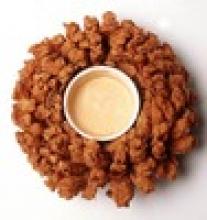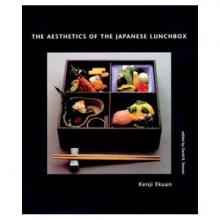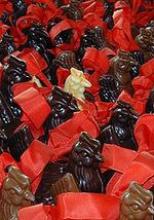Easy Beer Bread
Beer bread is one of those things that are so easy to make that people think that there's got to be a trick. It's the easiest bread you'll ever make, and it's so easy that it's one of the things I suggest people who have never baked anything, bake. Plus, it's really fun, and it makes incredible bread. It's enormously fun to see what a particular brew does to the same recipe for bread. Plus, you can add herbs, or dried fruit, or even chocolate, to make the bread a bit special. There really are endless variations.
There isn't. It's that easy to make. It's easy because with the use of the beer, and a little baking powder, and sugar, you don't need to add yeast to the flour. The beer does that for you. And for those who want it simpler still, you can use self-rising flour. What makes it fun is that with a basic recipe, there are endless variations. First of all, there's the beer; a dark beer, like a porter or a stout, makes a richer more robust bread. And there's something about the bread that really truly brings out the flavor of the beer.
Mostly, though, I encourage you to think about which beers to try; keep in mind that it's more economical to buy beer by the six-pack, so be prepared to drink the other five; it's your frugal duty. Also keep in mind that when cooking with beer, as in cooking with wine, if you wouldn't drink it quite happily, you certainly shouldn't cook with it. I favor dark beers; hearty stouts and porters, and fruity beers, with dried fruit in the bread, and, interestingly, hoppy IPAs, all work well in beer bread.
Basic Beer Bread Recipe (Makes 1 loaf)
Ingredients
- 3 cups all-purpose flour (plus a little more for handling)
- 1 Tablespoon granulated sugar
- 1 Teaspoon salt
- 1 Tablespoon baking powder
- 12 Ounces of Really Good Beer
Procedure
- In a large bowl, mix together the sugar and flour.
- Add beer and continue to mix. Begin with using a wooden spoon, but as the batter grows stiff, use your hands.
- The batter will be sticky, and slightly lumpy, but you do want the beer and flour to be quite thoroughly distributed.
- Pour into a 9 x 5 inch greased loaf pan.
- Bake at 350 degrees F (175 degrees ) for 50 for 60 minutes. The top will be crunchy, and the insides will be soft.
This is a bread that needs to be eaten in a day or two, or frozen. You can substitute 3 cups of Self-Rising flour, but if you do, leave out the baking powder. You can make whole wheat beer bread by using 1 1/2 cups white flour, and 1 1/2 cups whole wheat; you'll need another teaspoon of bking powder though, and I use an extra Table spoon of sugar or sweetening. You might want to adjust the sugar upwards, depending on the beer, and personal taste; I've gone as high as 3 Tablespoons. Feel free to substitute brown sugar, honey, or maple syrup, but you might need to adjust the flour by a Tablespoon or two, as well. Variations include a cup of grated cheese, added to the batter just before pouring into the pan, two tablespoons of fresh dill or rosemary, one or three finely chopped garlic cloves (depending on your fondness for garlic), a half a cup or so dried cranberries, chopped dried apricots, or walnuts or raisins and cinnamon . . . The important thing is to pick the beer first, and pick a really good beer, and then think about what would go well with that beer. This will likely require careful thought and a couple of beers to figure out.








